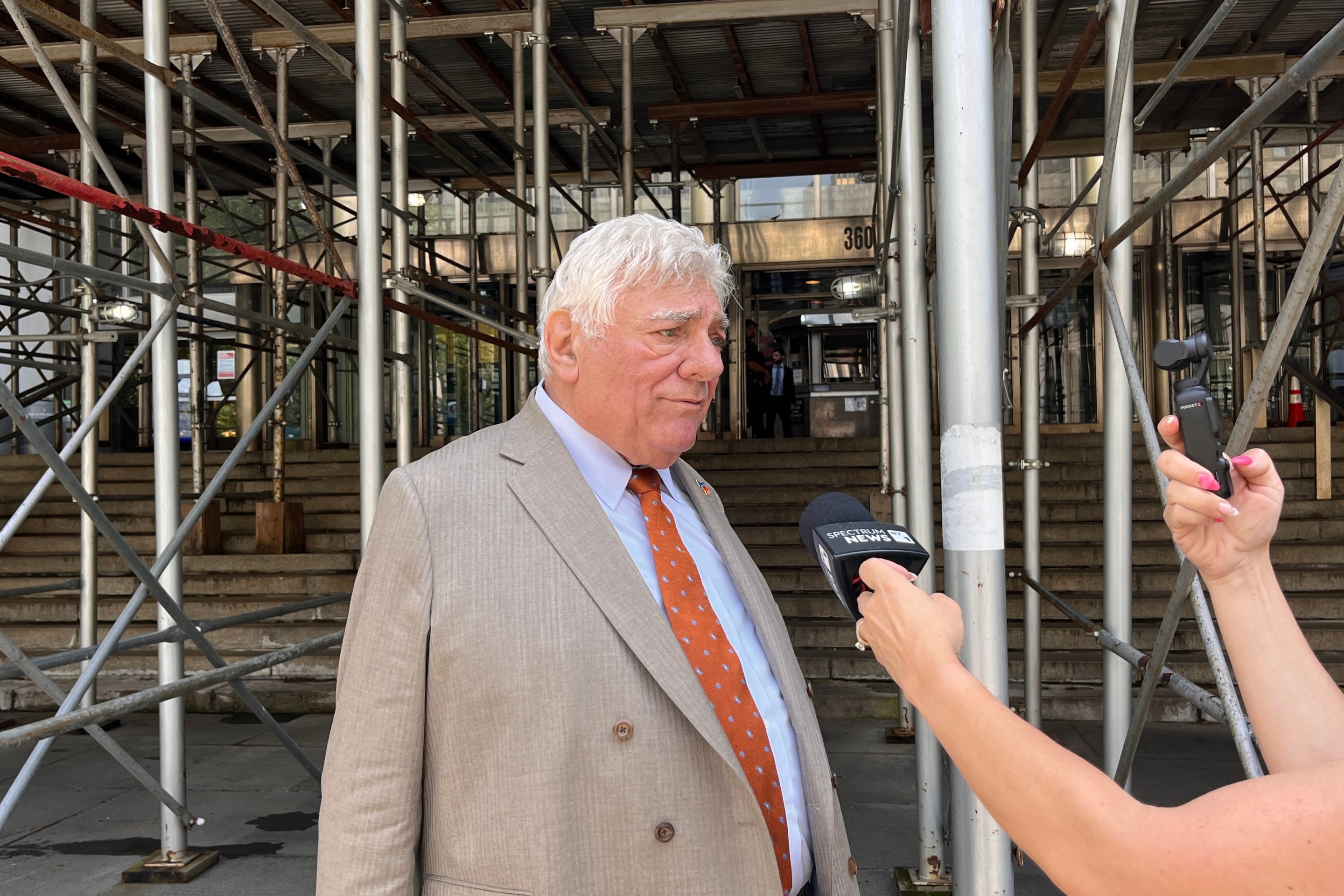
The Greenstreet at 110th and Amsterdam helps keep sewage out of city rivers and features a beefed-up, traffic-calming "blockbuster."
It rained yesterday, sending stormwater streaming down New York City streets and through sewer grates. The runoff mixed with wastewater in the system and overloaded treatment facilities, causing raw sewage to spill into the city's waterways.
Sound like an ecological disaster? It can be triggered by as little as one tenth of an inch of rainfall in one hour. Called Combined Sewer Overflow (CSO), this toxic broth also contains chemicals leached from roofs and pavement. 27 billion gallons of CSO pour into city rivers and bays every year. Until recently, there was no concerted effort to prevent it.
One of the more unsung PlaNYC initiatives aims to drastically reduce CSO, in part by managing streets more wisely. Certain traffic calming measures, it turns out, can not only make streets more ped-friendly, but also help make the city's rivers clean enough to swim in. To accomplish this, PlaNYC calls for retooling the Parks Department's Greenstreets program, and we are starting to see the results.
At their best, Greenstreets -- the pint-sized green spaces that Parks began planting in 1996 -- have served as modest traffic-calming measures, displacing asphalt with patches of greenery that send cues to slow down. The new breed goes a few steps further: They combine advanced stormwater capture techniques with more overt traffic-calming devices, like neckdowns and bulb-outs.
You can find one of the first new Greenstreets at 110th and Amsterdam in Morningside Heights. It occupies a long, wedge-shaped sidewalk extension along the southwest side of Amsterdam, widening from mid-block to occupy two traffic lanes at the intersection. This feature is called a "blockbuster," and it prevents southbound traffic from driving the wrong way down Amsterdam, which runs one-way below 110th.

Stormwater is captured by a drainage pipe on the north side of the blockbuster (right), where it is channeled under the sidewalk and into the soil of the planting bed. Any excess is stored in a chamber beneath the soil, where the plants can soak it up in times of drought.
"That's less water that our sewer system has to deal with," says Bram Gunther, the head of Forestry and Horticulture at Parks, who has been instrumental in implementing the new Greenstreets. He points out that by storing the water for later use, this Greenstreet won't require Parks to send a water truck out on the street to keep it maintained. "Anytime you get to recycle water, that's a good thing."
Gunther's team began work on stormwater-capturing Greenstreets about two years ago. When PlaNYC was announced in 2007, he says, "it dovetailed perfectly, and the scope of [the project] increased by an order of magnitude."
Because stormwater capture requires construction that goes deeper than previous Greenstreets -- and because the new Greenstreets entail more sidewalk extensions -- a host of city agencies have to cooperate, including Parks, DOT, Environmental Protection, and Design and Construction. The PlaNYC mandate minimized red tape and allowed construction to ramp up.

The site at 110th and Amsterdam before the Greenstreet was built.
"It's kind of exceptional," says Dr. Paul Mankiewicz of the Gaia Institute, an expert on stormwater capture who has consulted for the city. "You've got real cooperation between the agencies."
This spring Mankiewicz will lead an evaluation of the first batch of "greener" Greenstreets, measuring just how well they capture runoff. There are now between 10 and 20 of them to look at, with 30 to 50 more in development.
Mankiewicz says Greenstreets will play a big part in the city's overall stormwater capture strategy, which also includes building green roofs, laying down permeable pavement, and planting a million trees. By his estimates, Greenstreets could eventually handle "somewhere greater than 10 percent of all excess stormwater, maybe much more."

In addition to Greenstreets, new surfaces can absorb stormwater and mitigate the urban heat island effect, which reduces condensation and runoff (image from Chicago DOT's Green Alley Handbook).
The program has been lauded by environmental advocates. Carter Craft, director of programs and policy at the Waterfront Alliance, thinks the early returns are promising.
"Tying stormwater capture with traffic-calming makes absolute sense," he said, "because you won't get another chance [to tear up the street] for five to ten years."
Craft has been helping the Office of Long-Term Planning and Sustainability determine sites that can be used to intercept runoff. While pleased with the progress on stormwater capture to date, he's reserving final judgment. "It's a success story if all the public agencies can maintain their focus and keep it going. Many of us are optimistic, but it's too early in the implementation phase to judge."
As we were reminded this morning, not every neighborhood welcomes a new Greenstreet. But the City Council took a big step toward advancing the concept two weeks ago, when it passed a resolution to create a citywide stormwater management plan based on the outline in PlaNYC. Mayor Bloomberg is expected to sign the bill into law.
New York still has a lot of ground to cover to catch cities like Seattle, which captures 90 percent of its excess stormwater. Although we get hit by bigger storms, explains Mankiewicz, we also enjoy a geological advantage. "There are huge amounts of sand and gravel under the soil," he said, perfect for absorbing stormwater. "We need to make a connection between the surface and the deeper soil beneath."
Daniel Simon contributed material for this story.
Photos: Ben Fried





